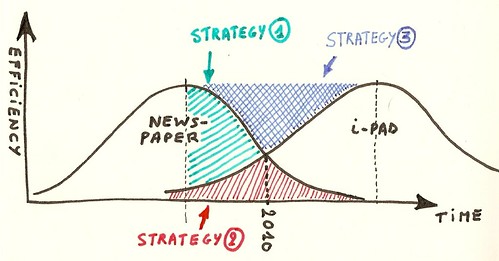We are all quite good at creating and sustaining comfort-zones, because this is what makes life predictable. But when we do that at as a group or an organization, disasters can happen. Newspapers are next on this list.
Many project teams isolate themselves in their own cocoons, having little contact as possible with what is, for them, outer space. In the past I have called this project cocooning. Recently I have come to think of it as shop floor fear.
The truth is that any sign of skepticism puts competent teams at the edge of their comfort zone. The resistance they meet is mostly countered with … resistance. By virtue of their ‘shared values’ project teams counter feedback with arrogance. That is why large scale projects fail even when all of the measurements, indicators and dashboards in the green zone.
Group-Think
When Irving Janis discovered this mechanism he defined it as group-think. It occurs “when the members’ strivings for unanimity override their motivation to realistically appraise alternative courses of action.”
Group-think has led to disasters such as failure to anticipate the Japanese attack on Pearl Harbor (1941); the Bay of Pigs fiasco (1961) when the US administration sought to overthrow Cuban Government of Fidel Castro; and the prosecution of the Vietnam War (1964-67) by President Lyndon Johnson. Lend me your ears and I can top this list with some juicy stories of failed large scale projects.
Testing Group-Think
Group cohesion is the comfort zone at stake because that is the value that seems to be more important thanb common sense. To make groupthink testable, Janis devised eight symptoms indicative of groupthink:
1. Illusions of invulnerability creating excessive optimism and encouraging risk taking.
2. Rationalizing warnings that might challenge the group’s assumptions.
3. Unquestioned belief in the group’s morality and ignoring the consequences of their actions.
4. Stereotyping those who are opposed to the group as weak, evil, biased, spiteful, stupid, etc.
5. Direct pressure to conform placed on members who question the group, in terms of ‘disloyalty’.
6. Self censorship of ideas that deviate from the apparent group consensus.
7. Illusions of unanimity among group members, silence is viewed as agreement.
8. Mind guards — self-appointed members who shield the group from dissenting information.
When we test the Newspaper industry against these criteria, they score very high, so we may be looking at a disaster waiting to happen.
Preserving the Problem
NYU professor Clay Shirky has a clear view on why group-think exists. According to him, complex solutions (like a company, or an industry) can become so dedicated to the problem they are the solution to, that often they inadvertently perpetuate the problem: ‘Institutions will try to preserve the problem to which they are the solution.’
Shirky refers to how the media industry is incapable of changing because they are solving the wrong problem. Let’s face it: newspapers are the solution to the problem of … news gathering and news distribution. AND THAT PROBLEM NO LONGER EXISTS.
Distribution is the Wrong Pot to Piss In
In an earlier sketch with Seth Godin I have argued that it’s about content, not printing or distribution. The Shirky Principle, which results from the mechanics of group-think seems to confirm my analysis.
Nowadays if we all want news we simply go to Google to get it. Who published it isn’t nearly as important to readers any more. Nor is the packaging. There are 3 strategies for newspapers to react to the downturn in their business:

NO PROBLEM: This is where most newspapers and magazines are today: Do nothing unless the competition forces you to. Paper is the main business and the internet, well… because we have to.
EXTRAPOLATING THE PROBLEM: these companies know that printing will be out of business some day, so they just make the technical switch to a new medium (the internet and e-readers). However, they have fallen in love with the problem that no longer exists: they still view themselves as gatherers and distributers of news (and what sucks even more: they still package the news on these e-readers in ‘pages’ and ‘issues’ – a constraint that was due to the printing press!)
REINVENTING THE PROBLEM FROM SCRATCH: Today’s problem is an abundance of news and a need to make sense of it all. So the future is to be a platform for sense-making. This will require the newspapers business to let go of their attachment to the producer-consumer model. Only then will they be able to search for new revenues and growth.
PS: Have a look at another sketch with Jef Staes to see how Belgian Media (and to be honest: the complete Belgian Economic and political landscape) are a good example of the mechanics of group-think.




Pingback: Luc’s Thoughts on Organizational Change » Do I Need To Paint A Picture?()